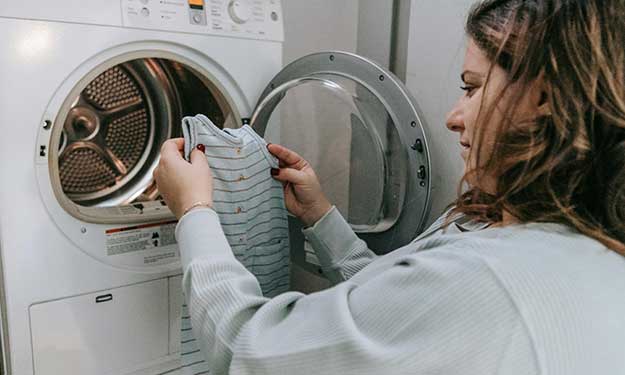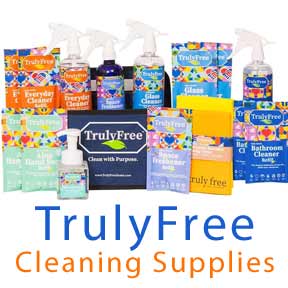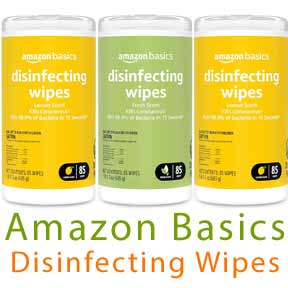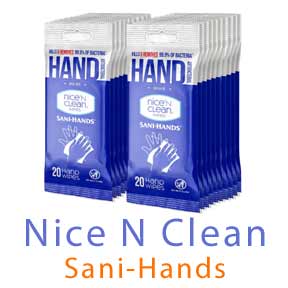Stain Removal Guide

Guide For Removing and Cleaning Stains
Stains happen to everyone – whether it’s a coffee spill, a grease splatter, or an ink mark. If treated improperly, some stains can become permanent. This stain removal guide provides effective, simple, and often chemical-free solutions to remove stains the right way.
General Tips for Stain Removal
What stain removal guide wouldn’t be complete without these stain removal tips?
- Always check for colorfastness before treating any fabric.
- If a garment’s label recommends professional dry cleaning, follow those instructions.
- Treat stains as quickly as possible to increase the chances of complete removal.
- For most stains, never use heat (hot water or a dryer) until the stain is fully gone, as heat can set stains permanently.
Stain Removal Guide for Common Stains on Clothing
Below are some of the more common stains that can happen to clothing:
Removing Food Stains from Clothing
Method 1: Using Shaving Cream to Remove Food Stains
Can shaving cream help remove food stains from clothing? Yes. Shaving cream contains surfactants like those in detergents, which help break down stains. However, it works best on oil-based or protein stains (e.g., sauces, coffee, or grease). Apply, let sit for a few minutes, then wash.
Method 2: Using Hydrogen Peroxide for Perspiration Stains
Hydrogen peroxide is effective on sweat stains, especially on white fabrics. Apply directly, let sit for 10-15 minutes, then wash. However, it may cause fading on colored fabrics, so always do a spot test first.
Method 3: Can Bar Laundry Soap Prevent Stains on Clothing?
Using bar laundry soap (like Fels-Naptha or Zote) under the arms before washing can help remove deodorant buildup and sweat stains. However, it doesn’t necessarily prevent future stains, but regular treatment (every few wears) helps avoid long-term buildup.
Removing Blood Stains from Clothing
Using cold water on a blood stain is essential to prevent setting the stain. Below is a general blood stain removal recipe:
- 1 tbsp dish soap
- 1 cup cold water
- 1 tbsp hydrogen peroxide (for whites & light colors, spot test first!)
Mix, apply to the stain, let sit for 10-15 minutes, then rinse with cold water and wash.
The dish soap and hydrogen peroxide mix works well, but hydrogen peroxide can weaken fabric over time – best for whites/light colors.
Straight hydrogen peroxide is a great option, especially for fresh stains, but always spot test on colored fabrics.
Alternative Methods for Blood Stain Removal
Method 1: Salt Water Paste
- Cold water and salt paste (2 tbsp salt plus enough cold water to make a paste)
- Apply, let sit for 30 minutes, scrub gently, rinse, and wash.
Method 2: Salt or Aspirin and Water
- Salt or aspirin (crushed in cold water) can also help break down blood stains.
Avoid hot water and drying until the stain is completely gone – heat sets blood stains permanently.
Removing Grease Stains from Clothing
Degreasing Pretreatment
- 1 tsp dish soap (Dawn works best!)
- 1 tsp baking soda or cornstarch (absorbs oil)
- A few drops of white vinegar (cuts grease)
Make a paste, rub into the stain, let sit for 10 minutes, then wash.
Quick Absorption Method for Fresh Grease
- Sprinkle cornstarch, baby powder, or chalk onto the stain.
Let sit for 10-15 minutes, then brush off before washing.
Removing Red Wine Stains from Clothing
Method 1: Baking Soda or Salt
- 2 tbsp baking soda or salt
- Enough water to make a thick paste
Apply to the stain, let dry, then brush off and rinse with club soda or white vinegar.
Baking soda absorbs moisture, but for best results, use salt immediately after the spill (it absorbs better).
Method 2: Boiling Water
- Stretch fabric over a bowl and slowly pour boiling water through the stain from 6 to 12 inches above. Be careful, the water is hot!
- Launder as usual.
Boiling water over stretched fabric works well but is safest on white or colorfast fabrics. Avoid for delicate fabrics.
Method 3: White Wine
- If you have it, pour white wine directly onto the red wine stain to neutralize it.
- Blot with a clean cloth, then wash as usual.
Removing Coffee and Tea Stains from Clothing
If possible, cold water rinse is the best quick fix.
Method 1: Vinegar Soak for Set-in Stains
- 1 part white vinegar
- 2 parts water
- Soak for 15-30 minutes, then wash as usual.
Method 2: Baking Soda Scrub (for fresh spills)
- Sprinkle baking soda on a damp stain.
- Blot gently, let sit for a few minutes, then rinse with cold water and wash.
The vinegar solution works well for set-in stains. Adding baking soda can boost effectiveness.
Sun drying is also great for whitening.
Removing Ink Stains from Clothing
Method 1: Lemon Juice & Cream of Tartar Paste (for whites)
- 1 tsp lemon juice
- 1 tsp cream of tartar
- Make a paste, apply to the stain, let sit in the sun for 30 minutes, then wash.
Method 2: Rubbing Alcohol or Hairspray (for all fabrics)
- Dab rubbing alcohol or alcohol-based hairspray onto the stain with a cotton ball.
- Let sit for 5 minutes, then blot with a clean cloth.
- Rinse with cold water and wash.
Method 3: Club Soda (Emergency Fix!)
- If available, blot or lightly pour club soda on the ink stain and blot immediately to prevent setting.
Notes:
- Lemon juice and cream of tartar paste works, but for deep ink stains, rubbing alcohol or hand sanitizer is often more effective.
- Club soda helps prevent setting but doesn’t always remove the stain. Milk or hairspray (with alcohol) are alternative ink removers.
- Always check for colorfastness on colored fabrics before applying treatments.
Removing Grass Stains from Clothing
Method 1: Rubbing Alcohol
- Rubbing alcohol (enough to soak stain)
- Pour on stain, let sit for 15 minutes, scrub, and wash.
Rubbing alcohol works well, especially for synthetic fabrics.
Method 2: Enzyme-Based Detergent Treatment (for stubborn stains)
- Use a liquid enzyme-based detergent (Tide, Persil) and apply directly to the stain.
- Let sit for 30 minutes, then wash in cold water.
Alternate Methods
- White vinegar or a paste of baking soda and water can also help lift grass stains before washing.
Always check before drying as heat can set grass stains.
Stain Removal Guide for Furniture and Carpet
Removing Food and Drink Stains
Club soda is a great first step for fresh coffee, tea, juice, and wine stains. It helps prevent stains from setting. Blot immediately to prevent setting in.
If the these stains have dried, mix:
- 1/3 cup vinegar
- 2 tbsp mild dish soap
- 2/3 cup water
Sponge onto the stain, let sit for 10 minutes, then blot dry with a clean cloth. Do not scrub the stain as this can push the stain deeper into carpet fibers. Repeat as needed.
The vinegar, dish soap and water mixture works well for dried or stubborn stains. However, for wine stains, using hydrogen peroxide mixed with dish soap (1:1 ratio) can sometimes be more effective.
Removing Chewing Gum from Carpet or Upholstery
- Scrape off as much gum as possible without spreading it.
- Place a zipper bag filled with ice over the gum to freeze it. Once hardened, scrape it away.
- If residue remains, place a brown paper bag over it and iron lightly – the gum will transfer to the bag. Be sure the iron is set at a low temperature to prevent damaging fabric or carpet.
- If any sticky residue still remains, try dabbing with a little rubbing alcohol as this can help break it down further.
Stain Removal Guide for Rust Stains
If you’re looking for stronger recommended options, try these:
Method 1: White Vinegar & Baking Soda
- Apply white vinegar directly to the rust stain.
- Sprinkle baking soda over it, scrub gently, and let it sit for a few minutes before rinsing.
Method 2: Lemon Juice & Salt (Great for fabric and bathroom surfaces)
- Sprinkle salt over the stain and squeeze lemon juice on top.
- Let sit for a few hours (if possible, preferably in the sun if on fabric).
- Scrub and rinse.
Method 3: Commercial Rust Removers (Most effective for tough stains)
- Products like CLR (Calcium, Lime, and Rust Remover) or Bar Keepers Friend are specifically designed for rust stains and will work faster than DIY methods.
Can Tang or Kool-Aid Work on Rust Stains?
Using Tang or lime Kool-Aid to remove rust stains is old-school but can work because they contain citric acid, which helps dissolve rust and mineral deposits. However, it’s not necessarily the preferred method – just a creative, budget-friendly option if you don’t have specialized cleaners on hand.
When to Use Tang or Kool-Aid
- If you have kids and happen to have this on hand and you’re in a pinch and need a quick, mild acidic cleaner, it can work for light rust stains in sinks, tubs, or toilets.
Tile and Grout Stain Removal Methods
Old toothbrushes are excellent for scrubbing grout. Use either of these homemade cleaning solutions:
Method 1: Baking Soda & Vinegar (Effective for mild stains and mildew)
- Make a paste with baking soda and water.
- Apply to grout and let sit for 10 minutes.
- Spray with white vinegar, let bubble, then scrub with a toothbrush.
- Rinse with warm water.
Method 2: Ammonia-Based Cleaner (For tough stains)
- Mix 1/3 cup ammonia with 7 cups of water.
- Apply, scrub, and rinse. (No vinegar needed!)
Do Not Mix Ammonia and Vinegar Together
Try one of these recipes at a time. If you switch cleaning methods, make sure the previous solution has been thoroughly rinsed away before applying a new one to avoid unwanted chemical reactions
- Chemical Reaction: Ammonia is a base, and vinegar is an acid. When mixed, they neutralize each other, reducing their cleaning effectiveness.
- Strong Odor: The reaction creates an unpleasant smell, which can be irritating in enclosed spaces. Keep area you are working in ventilated by opening a window or using the fan.
Can Fabric Softener Sheets Help with Cleaning?
Fabric softener sheets can help with dust accumulation in areas around the house but aren’t necessarily the best surface cleaner for preventing stains.
What Can Fabric Softeners Do?
- Dust Repellent: The anti-static properties in dryer sheets help repel dust from surfaces like baseboards and blinds.
- Surface Wipes: They can be used to wipe down surfaces, picking up dust and lint.
- Residue Removal: Can help remove soap scum or light grime on glass shower doors.
What Fabric Softeners Cannot Do!
- Not a Stain Preventer: They don’t create a protective barrier to prevent stains from setting.
- Not a Heavy-Duty Cleaner: They won’t disinfect or deep-clean surfaces.
Stains are inevitable, but with this stain removal guide and the right techniques, they don’t have to be permanent. Whether it’s removing grease with household staples or lifting ink, many solutions can be found right in your kitchen.






